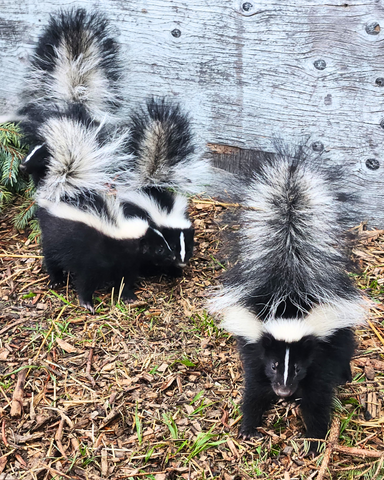👇 Psst... scroll down to fill out the details and add to your cart! 👇


(Mephitis mephitis). Patient Number 25-302.
Date of admission: May 25, 2025.
Reason for admission: Orphaned.
Patient History:
Striped skunks are a fascinating member of Alberta's wildlife, known for their distinctive black and white fur and their unique defense mechanism. These nocturnal creatures are usually found in woodlands, fields, and even suburban areas, where they help control insect and rodent populations. Despite their reputation, skunks are generally peaceful and prefer to avoid confrontation, using their famous spray only as a last resort to protect themselves. Their diet is quite varied, including insects, small mammals, fruits, and plants, making them important players in maintaining ecological balance.
In Alberta, skunks are most active during the warmer months, foraging for food and raising their young. Watching a skunk waddle along with its tail held high is a charming sight, and their role in the ecosystem is vital. They are also known for their burrowing habits, often creating dens in abandoned animal burrows or under decks and sheds. While they might be misunderstood due to their potent spray, skunks are gentle and beneficial animals that contribute significantly to the environment.
Spring through late summer is our busiest season, as countless baby animals arrive in need, including vulnerable skunk kits. These young creatures are often admitted after being accidentally separated from their mothers, displaced during relocation attempts, or truly orphaned.
In 2024, we cared for 47 skunk kits. This particular skunk kit was found alone and unresponsive in the grass in southeast Calgary. Believed to be just two weeks old, she was immediately brought to AIWC due to her critical, lethargic condition. Since her arrival, she has shown remarkable improvement and has since been introduced to 26 other skunk kits in care. They are growing rapidly, exploring, and perfecting their fighting stance, as evidenced by the photo. They are not quite old enough to fend for themselves, just yet, but they will return to the wild soon before Fall arrives in Alberta, where they can once again play their vital role in Alberta’s ecosystems.
